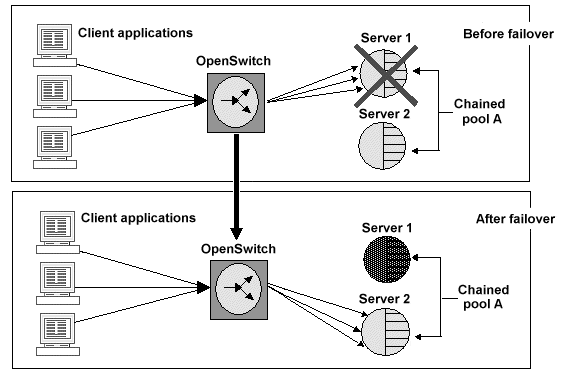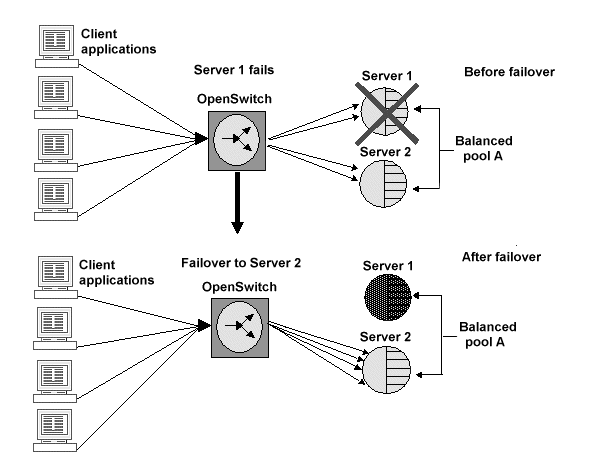When you define a pool, you can assign it one of two modes—chained or balanced. The mode determines how connections are assigned or routed to servers in the pool and how connections are managed during failover.
In chained mode, all connections are routed to the first server defined within the pool that has a status of “UP” or “LOCKED,” and administrative switch requests or automatic failover sends all connections to the next server in the pool, as illustrated in Figure 1-4. The order in which servers are accessed is the same order in which they were defined in the pool.
Figure 1-4: Chained mode failover

In balanced mode, incoming connections are simultaneously routed to all servers in a pool that have a status of “UP” or “LOCKED” until a server fails, effectively balancing the user load across all servers. When a server fails, all connections on the failed server are redistributed, in round-robin fashion, among the remaining servers, as illustrated in Figure 1-5. The order in which servers are assigned is determined by the order in which they are defined in the pool.
Figure 1-5: Balanced mode failover

In both chained and balanced modes, any failed attempt to log in to, or fail over to, a server that has a state of “UP” routes the client connection to the next server in the pool with a status of “UP” or “LOCKED.” If all servers within the pool are exhausted, incoming connections are disconnected from OpenSwitch, and a message indicating that no servers are available is returned.